On our way through Florida, we made a “quick” stop at Kennedy Space Center, really just for two reasons: 1) to see the new Atlantis exhibit and 2) to see a SpaceX rocket launch. The Atlantis exhibit had just opened in June, showcasing the actual Space Shuttle Atlantis, retired in 2011. The SpaceX launch was just a fantastic coincidence — the launch had been scheduled for the prior week, but got delayed to the point where it was feasible for us to see it just as we were passing through.
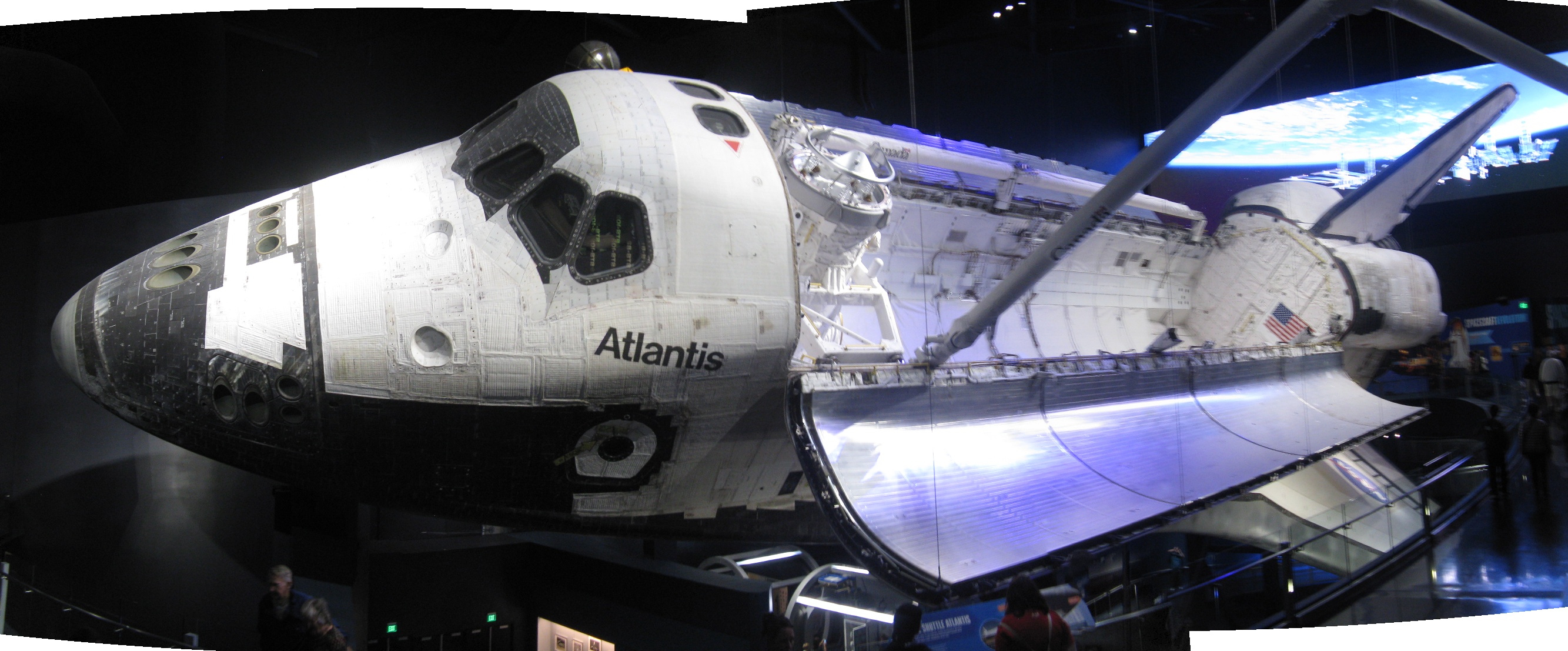

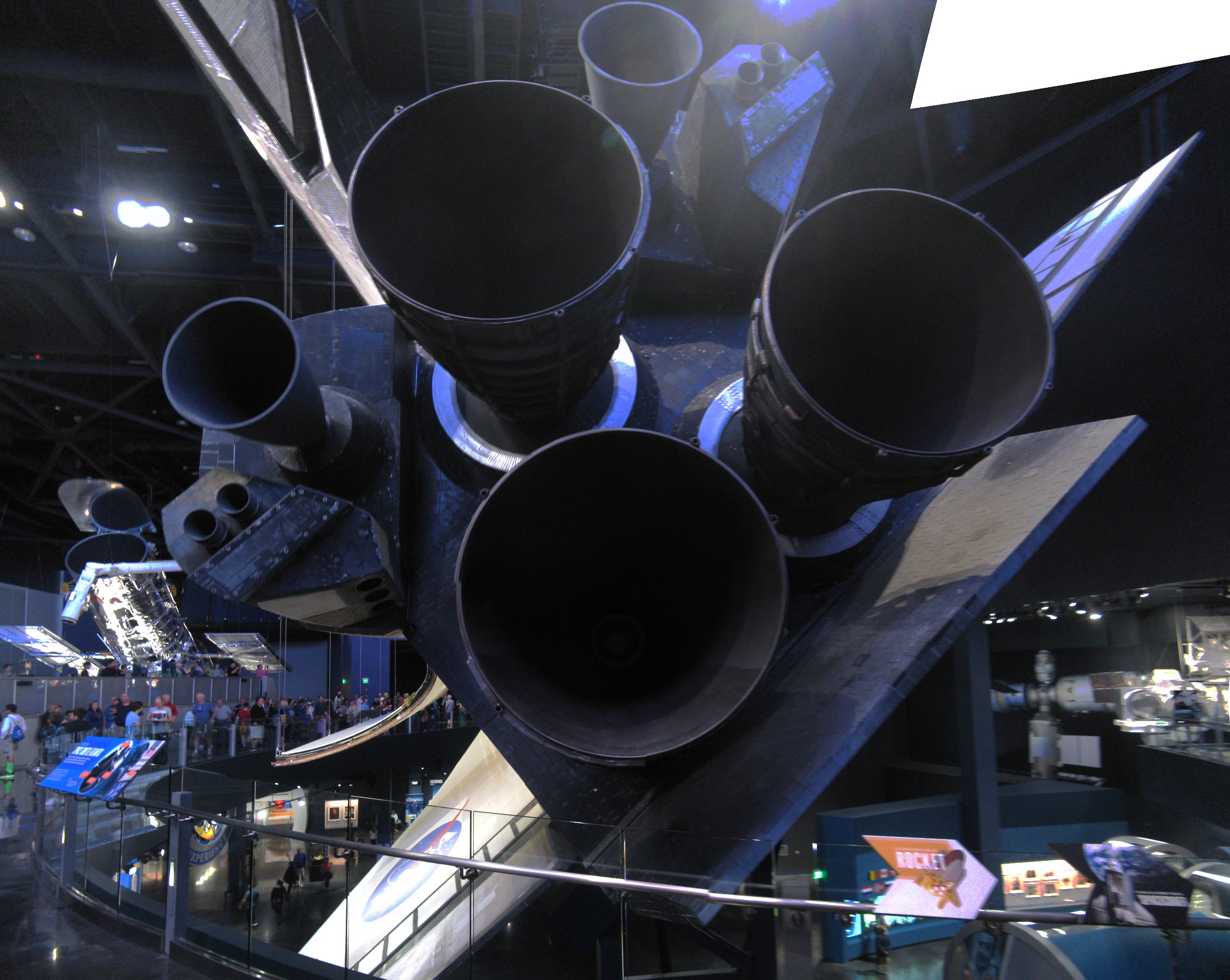

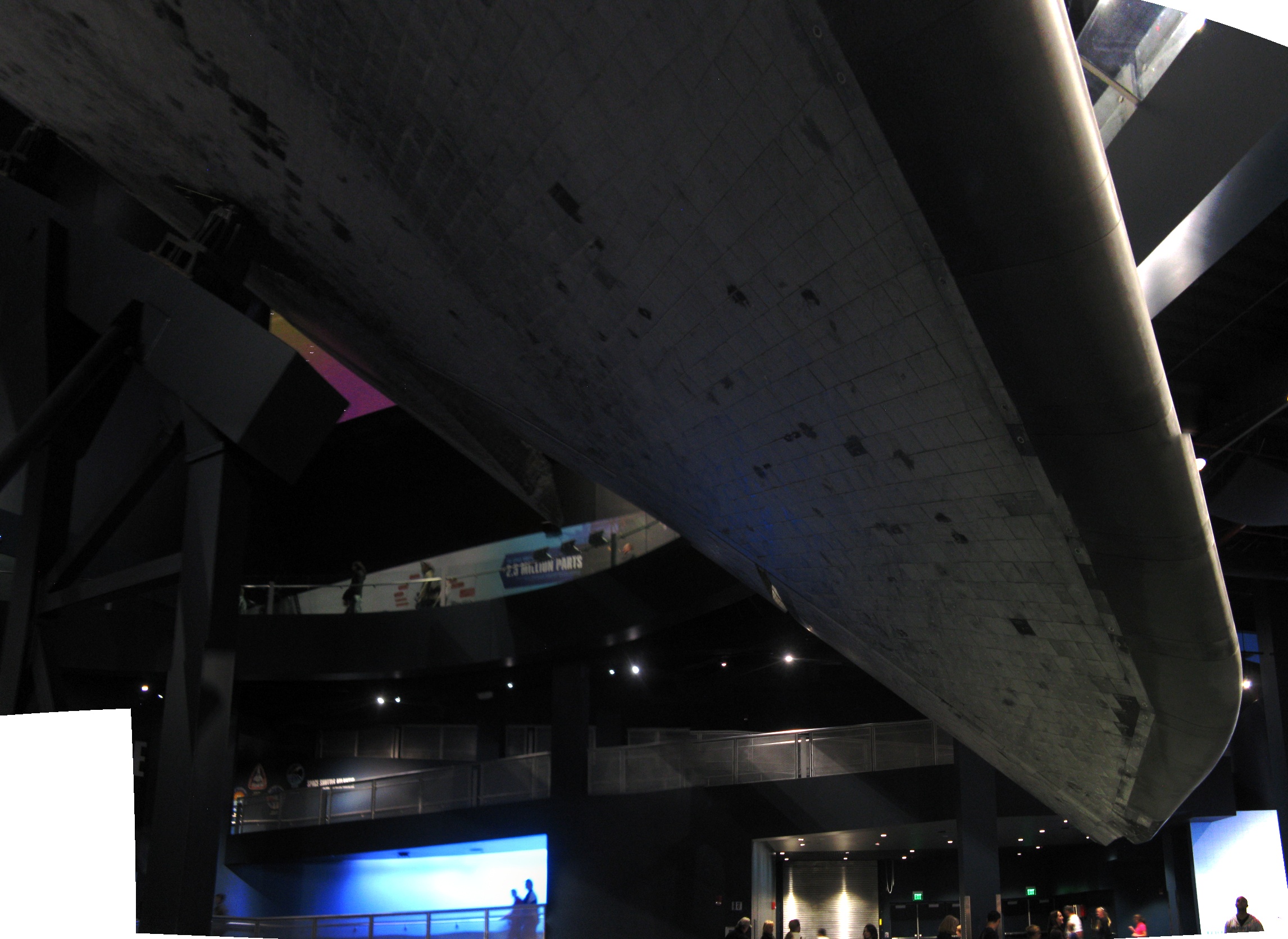
Adjacent to the Atlantis exhibit is the “space shuttle experience” ride, which is entertaining and barely educational, but I’ve done that before and didn’t have a need to do it again. But below it, on the ground floor right next to the spot pictured above, is a collection of space shuttle simulators. They may have had these before and I’d missed them or forgotten, but … wow, they looked like a lot of fun.
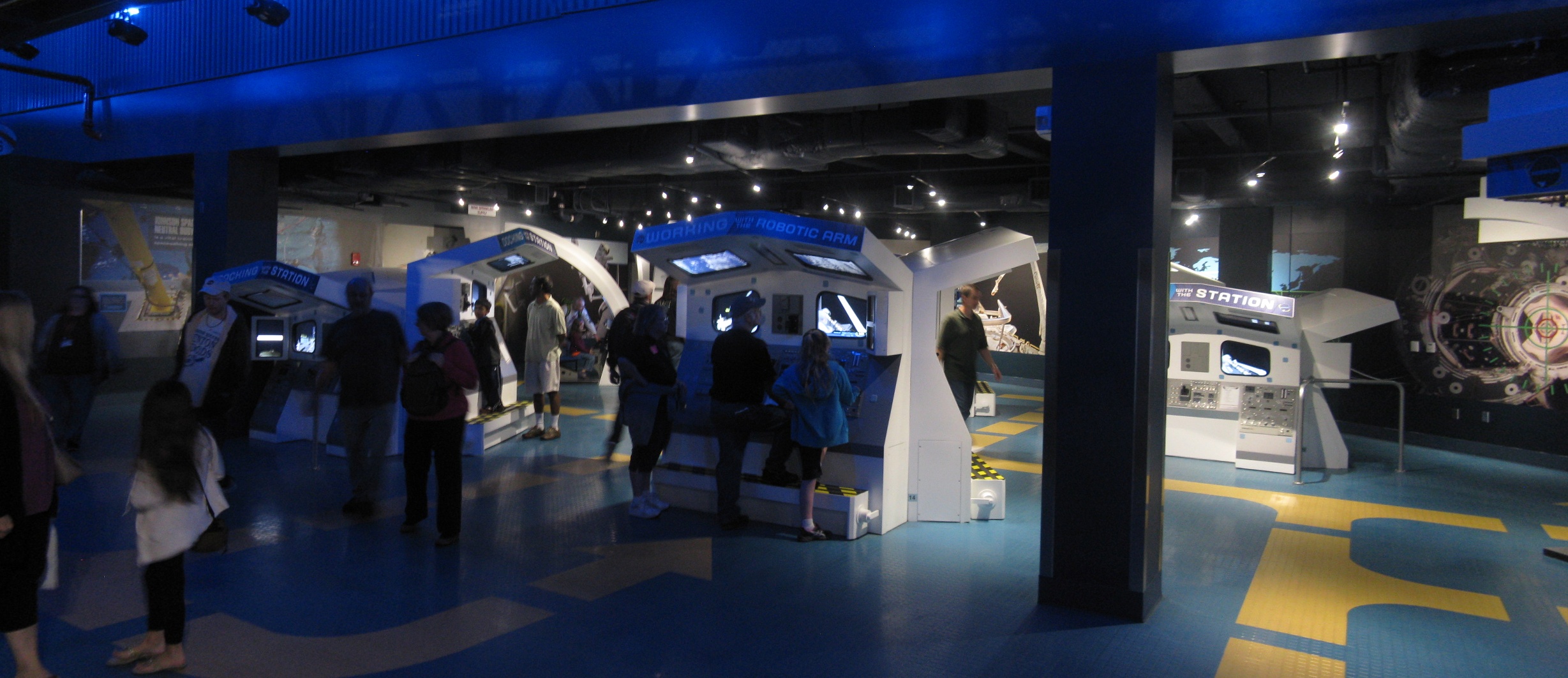
Everything from docking the shuttle to ISS, to operating a robotic arm, to landing a shuttle … man, I need to budget WAY more time here next time I come, like two hours just for this exhibit!
On to the launch … SpaceX is a new commercial launch company that has been in the news a lot by way of their historic trips to the International Space Station (thus being the first private company to do so). But their bread and butter will be commercial launch services, meaning launching satellites for various customers. They’ve already had success launching into low earth orbit, but this launch that we were there for was to be their first launch to geosynchronous orbit, which is far higher and is where most “serious” satellites live. Further, it was to be the first launch of their upgraded “v1.1” Falcon 9 rocket. So in my world it was certainly going to be a big deal.
Anyone can “see” a launch from Kennedy or Canaveral … Just be within 50 miles (or even further, actually) and step outside and look in the right direction. But it’s really far away, and you don’t hear anything — the sound of the rocket blasting off dissipates completely about 10-12 miles from the pad. So there’s value in getting up close. Problem is, lots of people want to get up close, and the closest viewing locations (between 3 and 7 miles from the pad) are all on restricted NASA / Air Force property, so you need to get a special pass.
Back in the space shuttle days, these passes were extremely difficult to get. They would go on sale about a month before the scheduled launch, at 9am one day, and sell out within minutes.
So I was surprised when, less than a week before the SpaceX launch, there will still viewing tickets available. We weren’t going to be in Florida on the exact day of the scheduled launch, but these launches frequently get delayed, and a delay might put the launch into the window of opportunity where we would be able to to see it in person. What the heck, I bought a pair of tickets and hoped that the launch would get delayed.
And, ta-da, it got delayed. So here we were at the Saturn V viewing area, about 7 miles from the “launch complex” where SpaceX is doing all its Falcon 9 launches, LC-40.
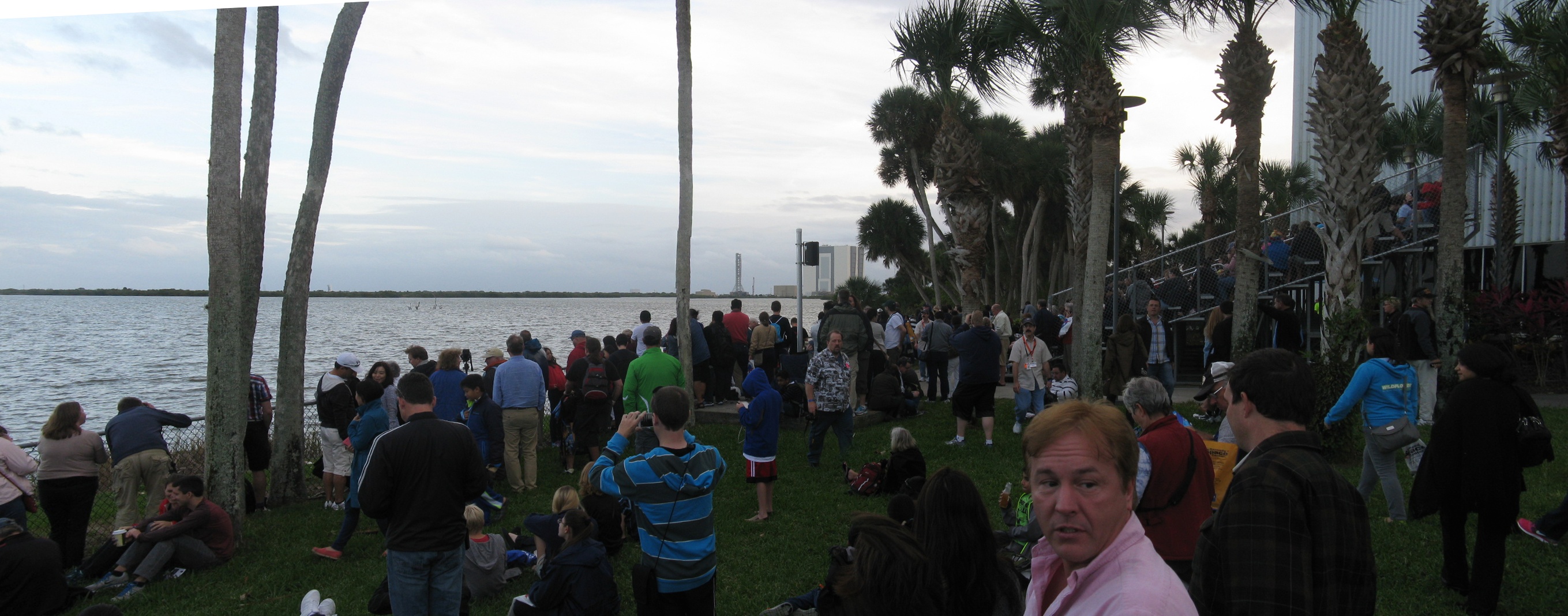

Obviously there were a lot of people there, but these crowds were nothing compared to a shuttle launch. You could even buy tickets on launch day, so many of these people were casual fans, and that was confirmed by their general ignorance of what was happening.

The panorama above shows the launch pads from the perspective of the viewing area. Across the watere, miles away, were the launch pads of various different rocket systems. On the left you see the most famous launchpad of all, LC-39A, which is one of the two pads (with LC-39B) that all of the 135 space shuttle missions launched from. They now sit idle, awaiting future large rockets. (Coincidentally, two weeks after we were there, NASA announced that they would lease the LC-39A complex to SpaceX.)
To the right, just above and to the left of the plants poking out of the water, is LC-41, where Atlas V rockets launch out of. Atlas V is the heavy-lift workhorse for the US government, and is the rocket (and launchpad) from which many famous deep space missions have gotten their first big kick, including New Horizons (arriving at Pluto in 2015), Juno (Jupiter in 2015) and the Mars Science Laboratory (which arrived in August 2012, to much celebration).
But today’s launch was going to be on LC-40, which is just above and to the right of the plants poking out of the water. Can’t see it, right? It’s at the extreme right edge of the photo; you have to look hard (click to enlarge a bit) and it helped to have binoculars. Well, just about nobody knew where to look — most were looking at the larger LC-41 complex, which didn’t have a rocket on the pad but did have that big service building that most probably thought was the rocket.
I figured once the rocket lit up there would be a gigantic, collective gasp as everyone realize they had their eyes (and binocs, and cameras) on the wrong spot.
Alas, it was not to be. SpaceX had a one hour window to launch the rocket, and they ended up spending the whole hour dealing with one problem after another, and finally scrubbed the launch altogether.
And when the announcer said the word “scrub”, we witnessed the most amazing paniced run for the busses ever.